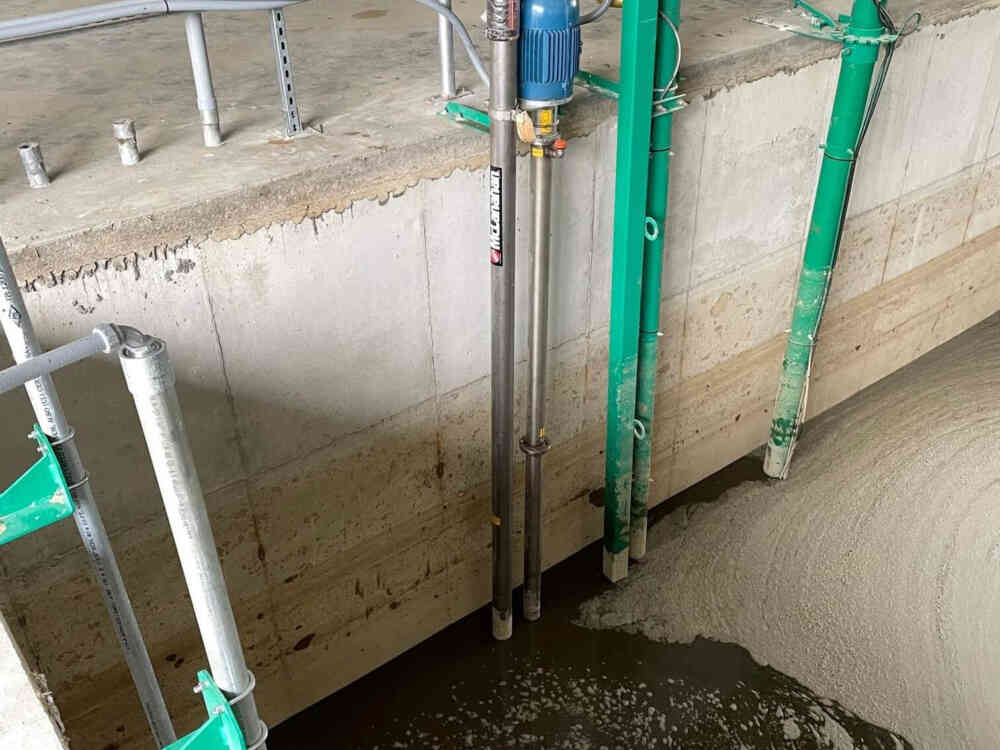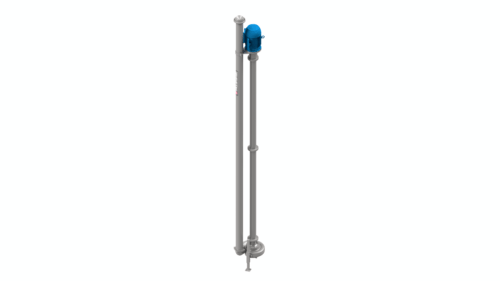Introduction
Manure management is an essential and non-negotiable part of dairy farming. Dairy cows can produce over a 150 pounds, or roughly 18 gallons, of manure daily. Moving and managing this large volume requires reliable equipment and systems. It can be a challenging task, but having the right equipment in place can improve the efficiency of your dairy’s manure handling. Effective manure handling plays a major role in nutrient management, cow comfort and farm productivity.
At the center of many successful manure management systems are manure pumps, one of the hardworking pieces of equipment responsible for helping transfer manure from barns, different stages in separation or treatment systems, and storage facilities. Whether it’s transferring sand-free manure to a rotary drum separator, sending recycled water to storage or pumping sand-laden manure to a sand manure separator, pumps are a critical piece of equipment needed to keep the entire system flowing.
Selecting the Right Pump for Your System
It’s crucial to select the right pump for the right step in your manure system. Pump selection depends primarily on manure consistency. Before plans are finalized, the team installing the pump or manure separation equipment will ensure any necessary pumps have been sized and selected properly. This size and selection process is based on the specific type of manure (liquid or sand-laden) and what the pump will be required to do. Factors such as distance, speed and viscosity will require different pump designs, sizes, horsepower and flow capacities. Each pump is sized according to specific system needs and conditions and should not be a one-size-fits-all recommendation. Selecting the wrong pump can cause unnecessary equipment wear and tear, extra part replacement, pump breakdowns and, in severe cases, full pump replacement.
Types of Manure Pumps
Positive Displacement Pumps
Positive displacement pumps, such as piston pumps or diaphragm pumps, are used to move viscous liquids or liquids containing solid particles. A large ram or diaphragm pulls sand-laden manure from a reception pit into the cavity of the pump and pushes it out into the discharge area. Flappers or check valves located within the pump keep the material moving in one direction.
Piston pumps move a fixed volume of manure on each stroke of the piston, rather than relying on impeller rotation like a centrifugal pump. These pumps are well-suited for handling manure that is thick, viscous, or contains solids like straw or sand, which can be challenging to move and cause wear.
On the intake stroke, the piston creates a vacuum, drawing manure into the cylinder. On the discharge stroke, the piston pushes the manure out of the cylinder through a discharge valve.
Piston pumps are used in various areas of manure management, including:
• Transferring manure from reception pits to storage lagoons or digesters
• Removing manure from barns
• Loading digesters
• Pumping manure through pipelines for long distances
Vertical Pumps
Vertical pumps are an efficient method for transferring sand-free dairy manure out of reception tanks to the next stage in the process. This can include transferring recycled water to sand-manure separators and dewatering screens or sending manure to storage. The pump is installed vertically in the manure storage tank, with the pump body submerged in the liquid. These pumps are often used to agitate while pumping. Depending on the pump manufacturer, some vertical pumps will feature a shredder on the impeller that shears long and stringy, light-duty organic material against the pump plate to prevent plugging. The shredder feature is designed to reduce soft solids to an acceptable size. Hard solids, such as sand, should be avoided to limit excessive wear.
These pumps often operate like typical centrifugal pumps, which uses a rotating impeller to move fluids by converting rotational energy into kinetic energy and then into hydrodynamic energy.
During pump operation, the impeller creates a pressure differential, which draws liquid in. The effluent is then discharged to the next stage in the process such as a rotary drum separator or another tank.
Sand-Laden Manure Pumps
Sand-laden manure pumps are built for pumping dilute liquids containing abrasive materials. These pumps are a cost-effective way to pump sand and manure (less than 6% total solids) and can be used in both flush and flume conveyance systems. Sand-laden manure pumps will often have rubber-lined impellers and casings to help provide longevity of parts and minimize maintenance.
This pump operates under the same principles as most centrifugal pumps. Rotational movement of the pump shaft and impeller convert electrical energy to fluid energy within the pump and low-pressure areas at the suction end pull fluid in. The rotation of the impeller causes fluid to move radially outward, creating a high-pressure area at the outlet, forcing the liquid out of the pump. While these pumps do not handle large debris as well as inclined manure augers, sand-laden manure pumps can be used where layouts are restricted.
Conclusion
Manure pumps play a vital role in the overall efficiency and effectiveness of a dairy farm’s manure management system. From transferring thick, sand-laden manure to separation equipment or sending recycled water to storage, choosing the right pump for each stage in the process is critical. Proper pump selection ensures smooth transport of manure and waste materials, supports the longevity of equipment, and helps reduce downtime and maintenance costs. As manure management continues to evolve, reliable pumps remain one of the key components that keep the system moving and the farm running efficiently.







